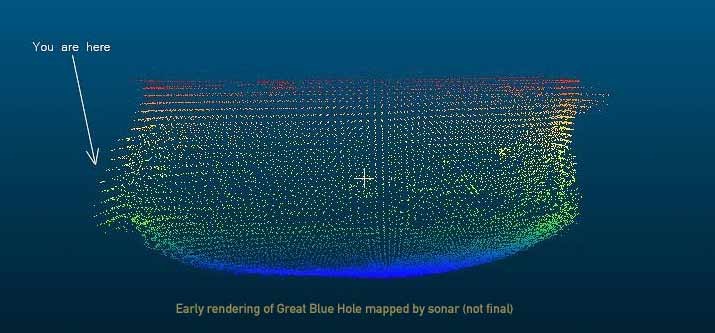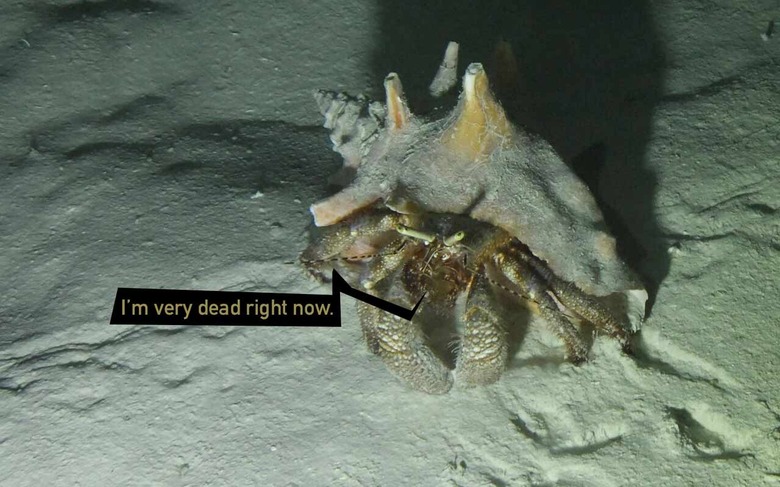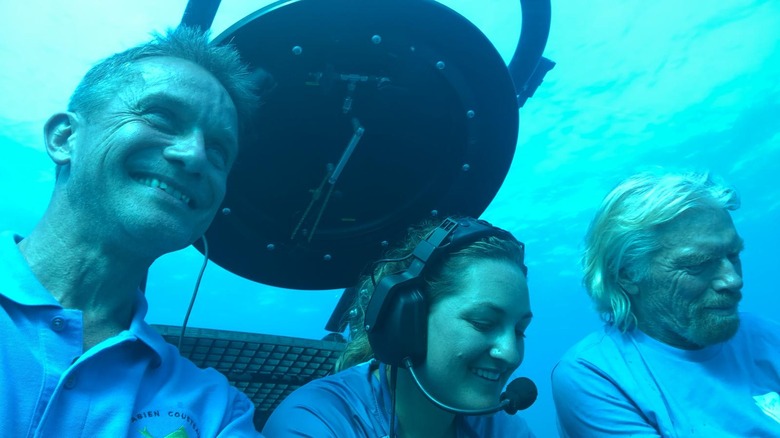Great Blue Hole Mysteries Deepen As Explorers Find Surprises
There's a very big, very deep hole in the ocean in Belize, and a submarine crew just got done exploring. They've got a documentary coming out later this year – but before that, they've got a few new bits of information to share about their adventure. The crew is part of Aquatica Submarines, a group that's main goal is to create submarines in a way that makes seas exploration less expensive than it's been in the past.
Aquatica Submarines make submarines for commercial, ocean science, tourism, media, and personal recreation. They also make custom vessels, where appropriate. They also promote themselves by diving deep under the waves on missions such as the one we're reporting today.
UPDATE: The company is, specifically, the following: "Based in Vancouver, BC, Canada, the company strives to design, build and operate safe, robust and versatile manned submersibles for use in scientific, commercial and recreational endeavors."
The photo of the Blue Hole above comes from the folks at Aquatica. The photo of the Blue Hole below was captured by Vladimir Shveda and uploaded to the internet in August of 2013.

The mission undertaken by Aquatica Submarines took place from November 27th to December 13th, 2018. During that time, they made way with 20+ successful dives into this lovely, massive, and mysterious hole in the floor of the ocean.

One of the ways this crew explored the area was to work with Kongsberg Mesotech to complete a full 3D sonar map of the entire Blue Hole. This was done with both submarine-mounted sonar tech and sonar blasters from the surface. "Once processed and collated, this data will be shared with the Government of Belize and the larger global scientific community as a legacy from the expedition."
Sonar devices used on this mission:
• Dual Axis Sonar (DAS) from surface support vessel Topside
• Multibeam Sonar from the submarine (for mapping and navigation)
Findings at distances below the surface:
• 290 feet: calcium carbonate layer with great coral reef
• 300 feet: hydrogen sulfide layer
• Below 300 feet: 100% Anoxic (no oxygen whatsoever)
• 407 feet: bottom or near-bottom, evidence of stalactite or stalagmite formations now covered with sand

Erika Bergman, Aquatica's Chief Pilot, provided the readings chart shown here from one of the dives during the mission. In addition to interesting readings on chemical compositions and sea life – or lack thereof, the group found "tracks" from creatures they could not identify. In an interview with CNN Travel, Bergman spoke about various aspects of the Blue Hole mission, sonar readings, and some mystery tracks. "You can be 20 or 30 meters away from a stalactite or a hunk of the wall and see it in every perfect detail," said Bergman, "better than eyesight could even provide." Bergman noted that they'd found unidentifiable tracks at the base of the hole, which apparently weren't from conch. They were "open to interpretation," said Bergman.
Below you'll see a photo at approximately 350 feet below the surface. This is what the crew referred to as the "Conch Graveyard." This was an area where hundreds of dead conch were found, along with evidence of attempts at escape. They'd likely fallen into the hole and, once reaching the bottom, found no oxygen in the water and suffocated.

The crew found evidence of stalactite and stalagmite formations, but reported likely coverage by "centuries of sand." Below you'll see evidence of this, in bits and pieces. What you won't see evidence of is the massive layer of hydrogen sulfide (H2S). This was what Bergman described as "diving in acid." This layer holds off oxygen circulation very, very effectively.
"We can see each conch with little tracks back up the hill trying to escape, then a slide mark where it slid back down after presumably being asphyxiated in the anoxic environment," said Bergman. The speed with which dead conch are covered up by new sand in this area – along with the number of shells still visible – seemed to show that a healthy conch population lived in the area. Per Bergman, these clues are "slightly morbid but describe something positive."

The crew expected that they'd find the bottom of the hole at somewhere around 420 feet. Upon descending through the H2S for the first time, the crew found the bottom much sooner than they'd thought they would. They'd found a ridgeline around the edge of the hole – a big one. "This ridgeline was only 320 feet deep," said Bergman, "Meaning that this 100 foot tall berm forms where sand pours into the hole from the edges.

Sir Richard Branson, Fabien Cousteau, and Erika Bergman took part in a Discovery Channel feature on the trip late last year (screenshot shown above). You can catch that feature over at Into The Blue Hole at Discovery right this minute. There'll be a documentary made by INE Entertainment released in "late spring 2019" as well. Until then, cross your fingers that their findings turn up some creepy creatures or more tracks than they expected – we need more new sea beasts here to study as soon as possible!
